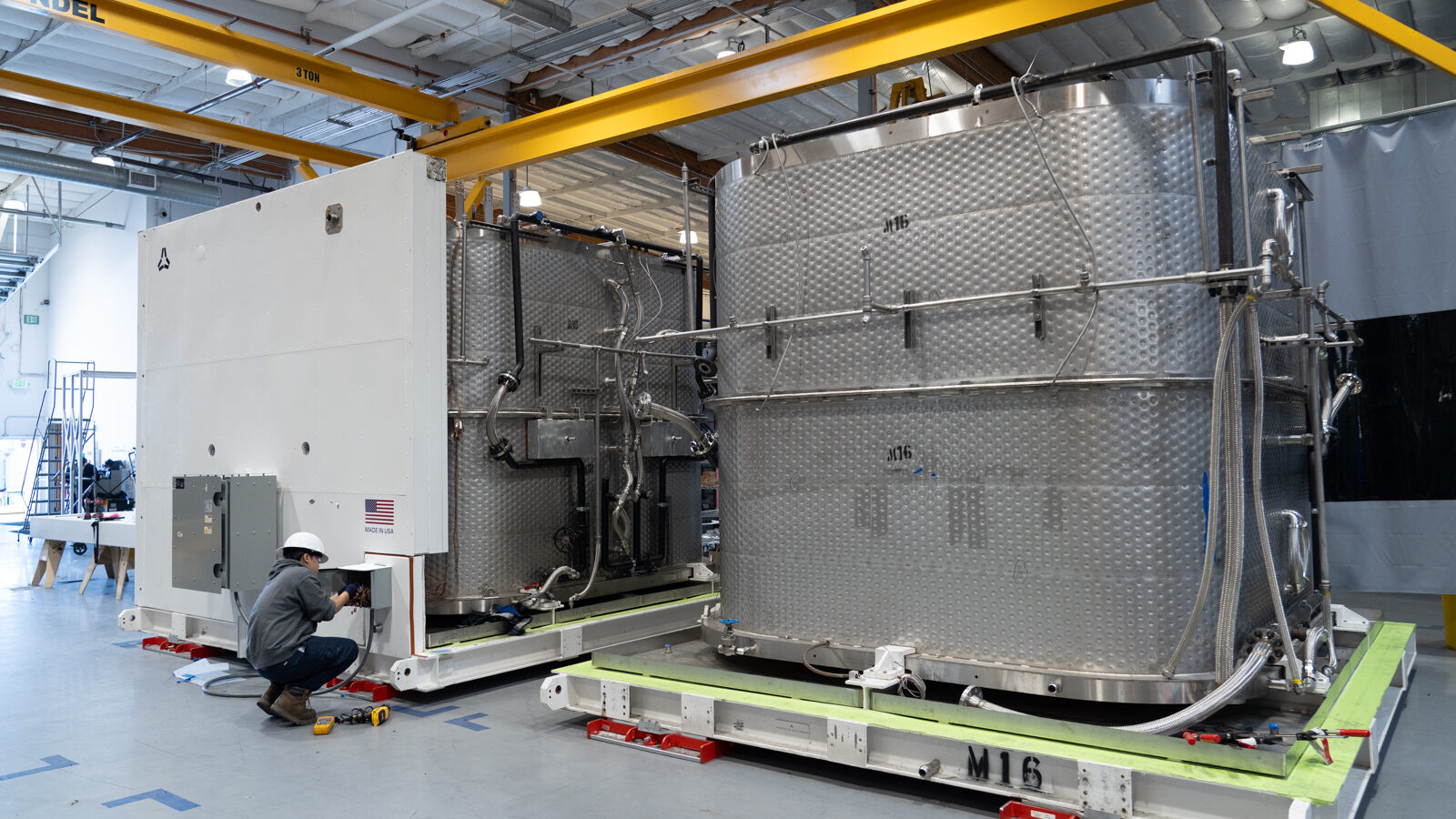EPA Proposes to Revise Chemical Risk Evaluation Framework Rule, Key NAM Ask

Flashback: When Congress passed the 2016 Lautenberg Amendments to the Toxic Substances Control Act, one of the biggest shifts was requiring the Environmental Protection Agency to create a systematic process for reviewing existing chemicals.
How it works: The process unfolds in three steps—prioritization, risk evaluation and risk management. Risk evaluation is the cornerstone, where the EPA decides whether a chemical poses an “unreasonable risk.” Those findings set the stage for any new rules manufacturers will face.
Why it matters: The NAM has long urged that risk evaluations should have an appropriately focused scope, recognize and consider the workplace protections manufacturers implement and be grounded in sound, data-driven science.
- The Biden administration took a different track—dramatically expanding the scope of risk evaluations while blocking consideration of workplace safety controls. These framework changes produced sprawling, thousand-page analyses that are unnecessarily confusing, unrealistic and detached from how chemicals are actually used.
- The result: The result was de facto bans on chemistries essential to existing manufacturing processes and disregard for manufacturers’ commitment to safety and compliance with other safety standards.
What we’re saying: The NAM has been at the forefront of this effort over the past two years.
- In letters to the transition team last December and to the EPA in April , the NAM pressed the administration to “pause and reconsider” risk evaluations, pointing to flawed data quality and poor assumptions in reviews of formaldehyde and 1,3-butadiene.
- “The EPA [has] reli[ed] on assumptions and shortcuts, which is leading to confusion, duplication and overregulation,” the NAM wrote in December to the transition team.
- The NAM has stated a functional TSCA program is vital to manufacturers’ ability to compete in a global economy. “The NAM appreciates EPA Administrator [Lee] Zeldin for taking action to right-size and bring common sense to the risk evaluation procedure,” said NAM Director of Chemicals, Materials and Sustainability Policy Reagan Giesenschlag.
What’s next: The proposed framework rule is published in the Federal Register, with comments due by Friday, Nov. 7. Members are invited to share feedback with the NAM by Oct. 3 to inform comments.
EPA Moves to Rescind 2009 Greenhouse Gas Endangerment Finding

Environmental Protection Agency Administrator Lee Zeldin on Tuesday announced that the agency is proposing to rescind its 2009 “endangerment finding” that concluded that greenhouse gas emissions endanger public health and welfare. The finding underpins most U.S. regulations to address climate change.
- The proposed rule, if finalized, would result in there being no greenhouse gas standards for any vehicle of any model year.
The background: The EPA administrator is proposing to withdraw the finding by asserting the EPA lacks the authority under Section 202 of the Clean Air Act to do so, that the Supreme Court case that precipitated the finding has been superseded by recent court cases, such as West Virginia v. EPA and Loper Bright Enterprises v. Raimondo, and that the EPA is acting in accordance with President Trump’s “ Unleashing American Energy” Executive Order, which called for a reexamination of the 2009 standard, among other actions.
- The EPA is basing this announcement on an updated study of climate science by the Department of Energy.
- In a press release, the EPA claimed that this endangerment finding “has been used to justify more than $1 trillion in regulations. …”
Other actions: As part of the EPA’s announcement, the agency is also proposing to rescind the Biden administration’s vehicle tailpipe regulations for light, medium- and heavy-duty vehicles.
- Additionally, the EPA announced last month that it plans to repeal the previous administration’s power plant regulations, a move that “is a critical and welcome step toward rebalanced regulations and American energy dominance,” NAM President and CEO Jay Timmons said at the time.
Feedback needed: Once the proposed rule is published in the Federal Register, the 45-day public comment period will begin. The NAM will be submitting comments on this proposed action and is seeking feedback from NAM members.
- Please contact NAM Director of Energy and Resources Policy Michael Davin ([email protected]) or NAM Vice President of Domestic Policy Chris Phalen ([email protected]) to provide your thoughts.
NAM to EPA: Allow Texas to Grant Permits for Carbon Sequestration

The NAM is urging the EPA to move forward with a proposed rulemaking that would allow the Railroad Commission of Texas “to issue and enforce compliance with [Underground Injection Control] Class VI permits for injection wells used for geologic carbon sequestration.”
- Due to manufacturers’ concern for environmental stewardship, the NAM is a strong proponent of measures that will mitigate emissions, NAM Vice President of Domestic Policy Chris Phalen told the agency.
- “Manufacturers view clean energy solutions, such as carbon capture and sequestration/storage technologies, as important parts of our country’s energy present and future, and manufacturers are leading the charge in developing them and scaling them up for widespread use.”
A quick review: The CCS process is made up of three steps: capturing the carbon dioxide; transporting by pipeline, road or ship; and injecting it far below ground for permanent storage.
- “Industries across the United States are investing substantially in CCS to decarbonize their operations and produce more sustainable products. In Texas, these projects have the potential to contribute $1.5 billion to the Texas economy and create 7,500 full-time, high-paying jobs,” the NAM noted.
State empowerment: Allowing states to permit permanent sequestration via the EPA’s Class VI injection well program would be a huge step forward for CCS across the country, as states are far more aware of their own geologies than is the federal government.
- State primacy in permitting would represent a victory for the Trump administration’s (and the NAM’s) push to streamline permitting across the federal government and jumpstart much-needed energy, infrastructure and related projects.
The last word: “Granting state primacy to Texas and other states will help create jobs, grow investment in manufacturing and pave the way for energy solutions that will support the United States’ 21st-century economy,” concluded Phalen.
EPA Agrees to Restart NAM-Led Legal Challenge to Biden-Era PFAS Rules

The litigation of the Biden administration’s limits on per- and polyfluoroalkyl substances in drinking water will resume this fall (POLITICO’s GREENWIRE, subscription). The NAM and other industry groups are leading the challenge against these standards, contending that they are unachievable and rely on invalid cost-benefit analyses.
What’s going on: In a court filing last week, the Environmental Protection Agency “said it and the … industry groups challenging the standards need until Aug. 1 to come up with a schedule for additional briefing, which was suspended earlier this year while EPA considered what to do.”
- In May, EPA Administrator Lee Zeldin announced that the agency would rescind and rework the standards for some substances while continuing to defend the equally unworkable standards for PFOA and PFOS.
A two-pronged strategy: While the NAM and its allies are awaiting the resumption of the court case, the NAM’s experts are pressing the administration to reconsider the standards for all six substances, including PFOA and PFOS. This week, they urged the EPA and the National Drinking Water Advisory Council to revise the PFAS National Primary Drinking Water Regulation.
- “The NAM supports health-protective and science-based safe drinking water standards. Manufacturers continue to innovate ways to protect the environment and our communities,” said NAM Managing Vice President of Policy Charles Crain. “The EPA’s [maximum contamination level] standards should encourage such innovation while setting attainable limits that water systems can realistically finance and meet. ”
- “Manufacturers support rational regulation of PFAS that allows manufacturers to continue supporting critical industries, while developing new chemistries and minimizing any potential environmental and public health impacts.”
- “Certain PFAS uses remain essential to the functionality and safety of products that underpin modern life, from semiconductor fabrication and advanced energy storage to lifesaving medical devices and aerospace systems, where no technically viable substitutes exist and are estimated to be decades out. PFAS regulations require a measured and evidence-based approach that the 2024 Final PFAS NPDWR lacks.”
In-person appearance: The NAM also reiterated manufacturers’ concerns to the EPA and the National Drinking Water Advisory Council in a public meeting on Monday.
- “[R]ules that are not feasible, cost effective or adequately supported by robust scientific analysis don’t just strain water systems, they cascade through water rates, capital plans, liability frameworks and ultimately the competitiveness of U.S. manufacturing,” NAM Director of Chemicals Policy Reagan Giesenschlag said.
- “In a time of fragile supply chains, regulations that unintentionally push manufacturing offshore or stall investments in innovation are devasting and at odds with the President’s America First priorities.”
What to watch: The NAM will continue its advocacy directed at the federal agencies, while appearing again in court once those proceedings resume. There it will argue that the government’s cost-benefit and feasibility analyses are irretrievably flawed and violate both the Safe Drinking Water Act and the Administrative Procedure Act.
NAM, Partner Associations Defend ENERGY STAR

Many major business groups, including the NAM, are calling on Congress to preserve funding and resources for ENERGY STAR, a federal program that promotes energy efficiency in consumer products (E&E News, subscription).
The request: “Clear legislative authorization backs ENERGY STAR as a voluntary public–private partnership run by the federal government,” more than 30 business groups told legislators.
- “We respectfully request that ENERGY STAR not be supplanted by nongovernmental efforts that could significantly alter and overly complicate the program.”
The background: Environmental Protection Agency Administrator Lee Zeldin has announced plans to restructure the agency, including by eliminating the Office of Atmospheric Protection, which manages the ENERGY STAR program.
- The ENERGY STAR program sets efficiency standards for a range of products and materials, including air conditioners and heat pumps, allowing them to display the program’s logo if they meet the criteria.
Why it matters: “Electricity saved by ENERGY STAR helps free up space on the grid needed so the U.S. can lead the world to power and grow artificial intelligence, support the burgeoning crypto asset industry and bring more manufacturing plants back to our shores,” the associations said.
The NAM’s take: “The ENERGY STAR program is a prime example of how federal agencies should be partnering with the industry to promote energy-efficient products that save money for consumers,” said NAM Director of Energy and Resources Policy Mike Davin.
- “Instead of imposing top-down regulations, ENERGY STAR brings together the public and private sectors on a voluntary basis to create a win–win–win outcome for consumers, the environment and the economy.”
EPA Plans Repeal of Biden-Era Power Plant Rules

The Environmental Protection Agency’s announcement Wednesday that it plans to repeal the previous administration’s power plant regulations “is a critical and welcome step toward rebalanced regulations and American energy dominance,” NAM President and CEO Jay Timmons said yesterday.
What’s going on: EPA Administrator Lee Zeldin said at a Wednesday press conference that Biden-era limits on greenhouse gas emissions from gas- and coal-fired power plants “suffocate our economy in order to protect the environment” (CBS News).
- The rules the EPA is proposing to roll back mandated that existing coal-fired plants and new natural gas–fired plants reduce or capture 90% of their emissions by 2032, among other requirements.
- Finalized by the previous administration in 2024, the regulations also contained an unrealistic timeline for power plants to adopt new technologies, especially given the need for permitting reform, the NAM said in April 2024.
Why it’s important: The 2024 power plant rules are a threat to affordable baseload energy—which manufacturers require to do their jobs—and put grid security at risk, Timmons said.
- “Repealing this unbalanced rule will enhance manufacturers’ access to America’s abundant energy resources and ensure that the industry has the power it needs to drive the American economy.”
NAM in the news: The Washington Examiner cited the NAM’s response to the EPA decision, quoting Timmons’ statement.
Manufacturers Asked and EPA Delivered: Repeal of Unworkable Power Plant Rule a Victory for Grid Reliability, Protecting America’s Energy Future
Washington, D.C. – In response to the EPA’s decision to repeal the 2024 power plant rule, a key priority for the National Association of Manufacturers’ ongoing efforts to rebalance federal regulations and unleash American energy, NAM President and CEO Jay Timmons issued the following statement:
“The EPA’s decision to repeal the unworkable power plant rule for existing coal-fired and new natural gas-fired power plants is a critical and welcome step toward rebalanced regulations and American energy dominance. This change will strengthen grid reliability and support manufacturing growth in the United States.
“From the onset, the NAM has warned that this rule would undermine the stability of our electric grid and impose unworkable mandates on critical energy infrastructure. The rule’s unrealistic timeline for power plants to adopt certain emerging technologies to commercial scale made it infeasible—undermining America’s energy security and hampering America’s leadership in next generation technologies like AI. Existing natural gas plants are critical to powering manufacturing in the United States—providing affordable, reliable baseload energy to continuously support industry. By layering new regulations on an already overburdened electric grid, the rule was putting our energy security at risk. Repealing this unbalanced rule will enhance manufacturers’ access to America’s abundant energy resources and ensure that the industry has the power it needs to drive the American economy.”
Background: Today’s action builds on the momentum from a December 2024 NAM-led letter to the transition team, signed by more than 100 manufacturing organizations, detailing regulatory actions the incoming administration could take to right-size regulations that stunted manufacturing growth and job creation—including the power plant rule. It also implements one of the key recommendations from the letter the NAM sent to 10 federal agencies in April, including the EPA, identifying the power plant rule as one of the most burdensome regulations facing manufacturers and urging a rebalanced approach to strengthen, rather than strain, U.S. manufacturing. Last year, the NAM endorsed Rep. Balderson’s (OH-12) Congressional Review Act resolution that would have blocked implementation of this rule.
-NAM-
The National Association of Manufacturers is the largest manufacturing association in the United States, representing small and large manufacturers in every industrial sector and in all 50 states. Manufacturing employs nearly 13 million men and women, contributes $2.93 trillion to the U.S. economy annually and accounts for 53% of private-sector research and development. The NAM is the powerful voice of the manufacturing community and the leading advocate for a policy agenda that helps manufacturers compete in the global economy and create jobs across the United States. For more information about the NAM or to follow us on Twitter and Facebook, please visit www.nam.org.
NAM: Proposed NAAQS Legislation Would Boost Manufacturing in the U.S.

The previous administration’s significant regulatory changes issued under the Clean Air Act—in particular, its unworkable tightening of allowable soot levels—will create hardship for local economies and must be revised, the NAM told the House Energy and Commerce Subcommittee on Environment ahead of a hearing today.
- Manufacturers that fail to meet the National Ambient Air Quality Standards will be unable to obtain permits to either construct new facilities or expand existing facilities, the NAM pointed out.
What’s going on: In 2024, the Environmental Protection Agency lowered the primary annual standard for fine particulate matter (PM2.5, or soot) from 12 micrograms per cubic meter to 9 μg/m3 .
- “By lowering the standard to 9 μg/m3, which is essentially the same as the background levels that naturally occur in the environment across the nation, the Biden EPA was increasing the number of industrial centers and U.S. population hubs that would be placed into nonattainment status,” NAM Managing Vice President of Policy Charles Crain said.
- In the past 25 years, thanks to manufacturer-developed technologies, U.S. air quality has seen a 37% reduction in PM2.5, Crain continued, adding that an EPA analysis found that less than 20% of PM2.5 emissions come from industrial processes or stationary fuel consumption. Most of it is from sources well outside manufacturers’ control, such as wildfires and crop and livestock dust.
Why it’s important: Enacting the Biden-era tightened standards would mean severe economic losses for the U.S., the NAM told the subcommittee.
- An NAM-commissioned Oxford Economics study found that a standard just slightly stricter than the one set by the Biden administration—8 μg/m3—“would result in a loss of $162.4 billion to $197.4 billion in economic activity and put 852,100 to 973,900 jobs at risk, both directly from manufacturing and indirectly from supply chain spending.”
What they’re doing: In today’s hearing, the House Energy and Commerce Committee discussed two draft pieces of legislation, both supported by the NAM, that would reform the process for establishing NAAQS, which the Clean Air Act mandates the EPA set. The measures include:
- The Clean Air and Economic Advancement Reform (CLEAR) Act, which would make the NAAQS process more workable for manufacturers while “maintaining the regulatory guardrails that protect the health and welfare of our local communities,” according to the NAM; and
- The Clean Air and Building Infrastructure Improvement Act, which “seeks to inject clearer guidance into the process for obtaining preconstruction permits and meeting compliance requirements under a revised NAAQS.”
Our take: “Manufacturers strongly support the Energy and Commerce Committee’s efforts to address policy challenges with the NAAQS and to explore solutions that will pave the way for greater investment in the infrastructure that will allow America to compete in the 21st century,” Crain concluded.
A Manufacturer of Thermal Batteries Foresees an Industrial Boom

Antora Energy has an energy storage solution that could transform American manufacturing.
Antora builds thermal batteries that draw in locally produced electricity when it’s cheap and plentiful, converting it into heat stored in solid blocks of carbon. That energy can be delivered 24/7 to manufacturers as affordable, reliable energy. It’s a solution that is both modular and scalable, capable of serving small and large manufacturers alike.
- “We’re taking local energy from sources that are already near factories, at times when nobody else wants it and it would otherwise be wasted, and delivering it to American manufacturers,” said Antora Chief Operations Officer Justin Briggs. “It helps the factory become more competitive and stabilizes the local grid.”
Promoting U.S. energy: Antora’s batteries are manufactured in the U.S., using a domestic supply chain that avoids reliance on critical minerals (which must often be imported from China).
- The core of the battery is a form of inexpensive, low- to medium-grade graphite that is often a byproduct of coal mining or petroleum refining—an abundant resource across the U.S.
- “This is an opportunity to build a new technology class in the United States, with American materials and American supply chains,” said Briggs. “From the very beginning, we can build in America to support U.S. manufacturers.”
Creating jobs: The company is excited about the opportunity to create jobs in the United States—both at Antora itself and at the factories it supports.
- “We’re currently operating our first factory—a thermal battery gigafactory in San Jose, California—but that’s just the beginning,”
 said Briggs. “We’re already looking at a second factory, and more beyond that. We’re talking about being able to create a tremendous number of jobs around manufacturing hubs in the U.S.”
said Briggs. “We’re already looking at a second factory, and more beyond that. We’re talking about being able to create a tremendous number of jobs around manufacturing hubs in the U.S.”
Leading a renaissance: Antora sees the chance not only to build a new industry, but also to help support the next generation of American manufacturing and global technological leadership.
- “[The U.S. has] a chance for a renaissance—to tap into these domestic, abundant energy resources and support manufacturing industries, from concrete and steel to chips and data centers,” said Briggs. “These are all sectors that need energy, and we can supply it cost-effectively.”
Overcoming hurdles: Briggs notes that electricity markets have been around for a long time—and as a result, regulatory hurdles designed by long-ago policymakers can get in the way of this new technology.
- “The rules that govern electricity markets were not designed to contemplate scenarios like this one,” said Briggs. “Thermal batteries bring huge benefits to industry and the electric grid, but it can be hard to do from a regulatory perspective. We’re working with regulators to open up markets to support these great project opportunities.”
- “We’re just trying to make sure there aren’t antiquated rules in the way, so we can help make American industry more competitive.”
The bottom line: “This is an opportunity to drive a resurgence in American manufacturing through cheap energy,” said Briggs. “We’re putting this energy to use to repower American industry.”
Supreme Court Limits Scope of Environmental Reviews

The U.S. Supreme Court has put limits on a procedural requirement that has become a major roadblock for infrastructure and energy projects: environmental review under the National Environmental Policy Act.
The background: The predecessor of substantive statutes like the Clean Water and Clean Air Acts, NEPA is the “the single most litigated environmental statute,” NAM Vice President and Deputy General Counsel Erica Klenicki told us.
- In this case, local government and environmental groups brought a NEPA challenge to the Surface Transportation Board’s approval of an 88-mile rail line in Utah’s Uinta Basin, which would connect to the national rail network and carry crude oil to refinery markets along the Gulf Coast.
- The board approved the project after issuing a comprehensive, 3,600 page environmental impact statement under NEPA.
- But that wasn’t enough—the D.C. Circuit blocked the board’s approval, ruling that its exhaustive analysis failed to consider the repercussions of more oil production made possible by the rail line. It contended that the board should have considered the potential impact of increased oil refining on Gulf coast communities thousands of miles away—even though the board had no power at all to control for those effects.
The issue: The NAM filed an amicus brief in the case, urging the court to reject the premise adopted by the D.C. Circuit—that NEPA requires agencies to analyze the effects of upstream or downstream projects over which they do not exercise regulatory authority.
- Yesterday, the justices ruled 8–0 (Justice Neil Gorsuch recused himself) that the board did not have to consider such sweeping effects when evaluating whether to approve a project.
What they said: “NEPA is a procedural cross-check, not a substantive roadblock,” Justice Brett Kavanaugh wrote . “The goal of the law is to inform agency decision-making, not to paralyze it.”
- “Courts should review an agency’s [environmental impact statement] to check that it addresses the environmental effects of the project at hand. The EIS need not address the effects of separate projects,” Kavanaugh wrote. “In conducting that review, courts should afford substantial deference to the agency as to the scope and contents of the EIS.”
The NAM’s advocacy: The NAM has been a tireless proponent of limiting regulatory overreach, especially the out-of-control permitting process that strangles important new infrastructure and energy projects.
- “The congressional intent behind NEPA when it was passed was to make sure a specific project could be reviewed for its environmental impact—not to slow down progress on important economic growth,” said NAM Director of Energy and Resources Policy Michael Davin. “The U.S. should learn from other nations and review projects for environmental impacts without taking years and years to approve them.”
